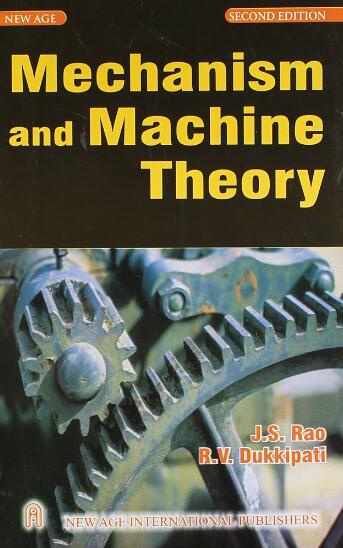平面四杆连杆机构的传动角,适用于承受外部载荷的不同输入输出连杆机构
IF 4.5
1区 工程技术
Q1 ENGINEERING, MECHANICAL
引用次数: 0
摘要
传动角是平面四杆连杆机构的传统性能指标,力和运动从输入连杆传递到输出连杆。然而,在计算传统的传递角时,输入和输出链接被预先设定为连接到固定链接,即接地链接。这就带来了在其他情况下计算传输角的问题,例如耦合器链路是输入链路。此外,传统的传输角无法评估外部负载对传输质量的影响。在这项工作中,我们重新审视了这一问题,并重新定义了传输角,从而可以研究输入和输出链接以及外部负载的不同选择对传输性能的影响。为了说明修订后的性能指标的应用,我们还对平面四杆联动装置的传动角分析进行了案例研究。此外,还引入了三个新的传动质量指标,并在此基础上对平面四杆联动机构的传动性能进行了优化。根据重新定义的传动角和提出的传动质量指数,可以对一般四杆联动装置进行传动质量分析和优化设计,以提高其传动性能。本文章由计算机程序翻译,如有差异,请以英文原文为准。
Transmission angle of planar four-bar linkages applicable for different input-output links subject to external loads
The transmission angle is a traditional performance indicator in planar four-bar linkages, whereby force and motion are transmitted from the input link to the output link. However, for the calculation of traditional transmission angle, it is predefined that the input and output links are connected to the fixed link, i.e., the grounded link. This brings the problem of calculating the transmission angle for other cases, for example, the coupler link being the input link. Moreover, the traditional transmission angle cannot evaluate the influence of external loads on the transmission quality. In this work, we revisit this problem and redefine the transmission angle, which allows us to investigate the effect of different selections of the input and output links and external loads on the transmission performance. A case study of transmission angle analysis of a planar four-bar linkage is included to illustrate the application of the revised performance index. Moreover, three new transmission quality indices are introduced, upon which transmission performance optimization of a planar four-bar linkage is presented. Based on the redefined transmission angle and the proposed transmission quality indices, transmission quality analysis and optimal design of general four-bar linkages can be conducted to enhance their transmission performances.
求助全文
通过发布文献求助,成功后即可免费获取论文全文。
去求助
来源期刊

Mechanism and Machine Theory
工程技术-工程:机械
CiteScore
9.90
自引率
23.10%
发文量
450
审稿时长
20 days
期刊介绍:
Mechanism and Machine Theory provides a medium of communication between engineers and scientists engaged in research and development within the fields of knowledge embraced by IFToMM, the International Federation for the Promotion of Mechanism and Machine Science, therefore affiliated with IFToMM as its official research journal.
The main topics are:
Design Theory and Methodology;
Haptics and Human-Machine-Interfaces;
Robotics, Mechatronics and Micro-Machines;
Mechanisms, Mechanical Transmissions and Machines;
Kinematics, Dynamics, and Control of Mechanical Systems;
Applications to Bioengineering and Molecular Chemistry
 求助内容:
求助内容: 应助结果提醒方式:
应助结果提醒方式:


